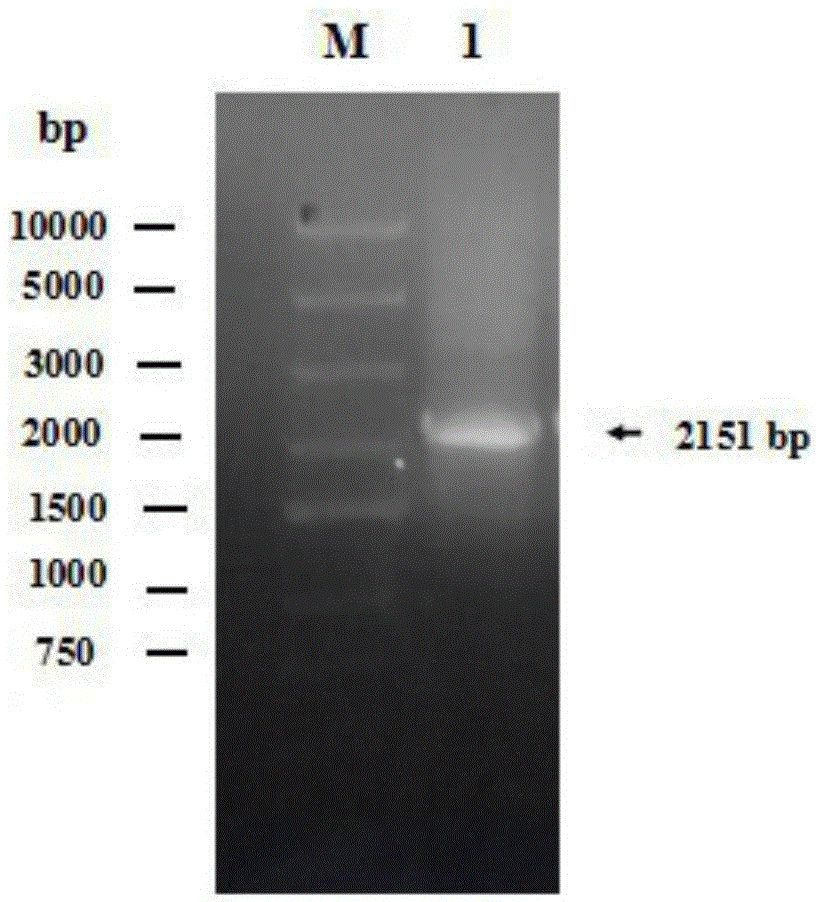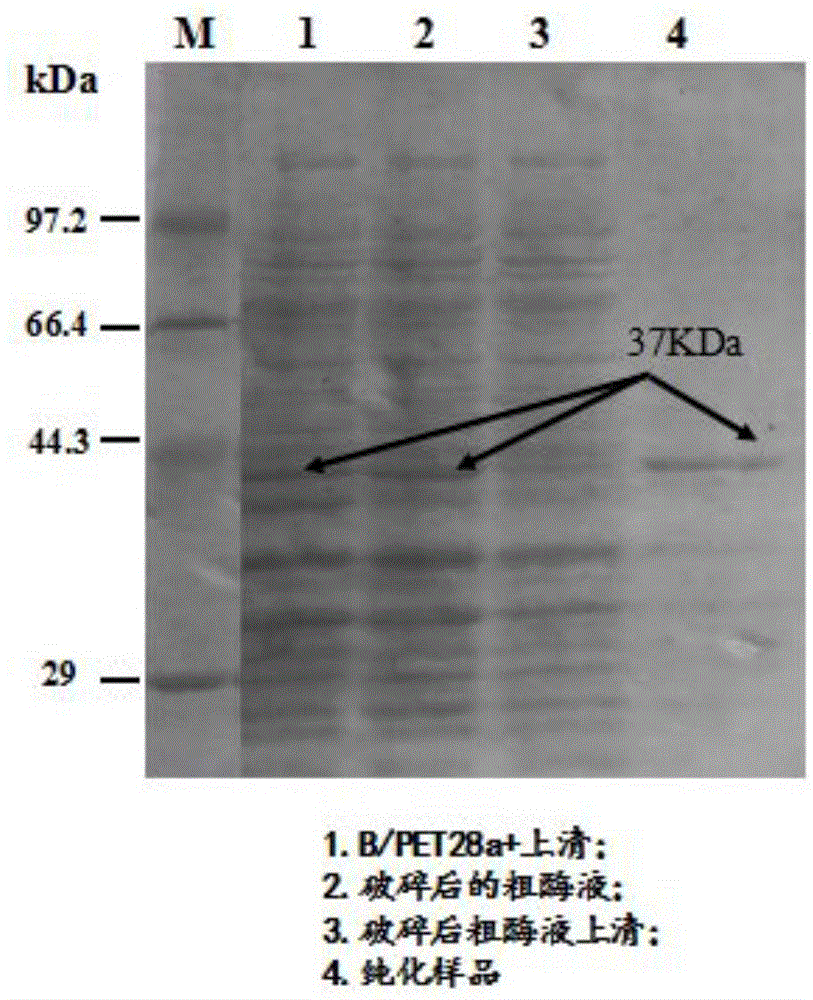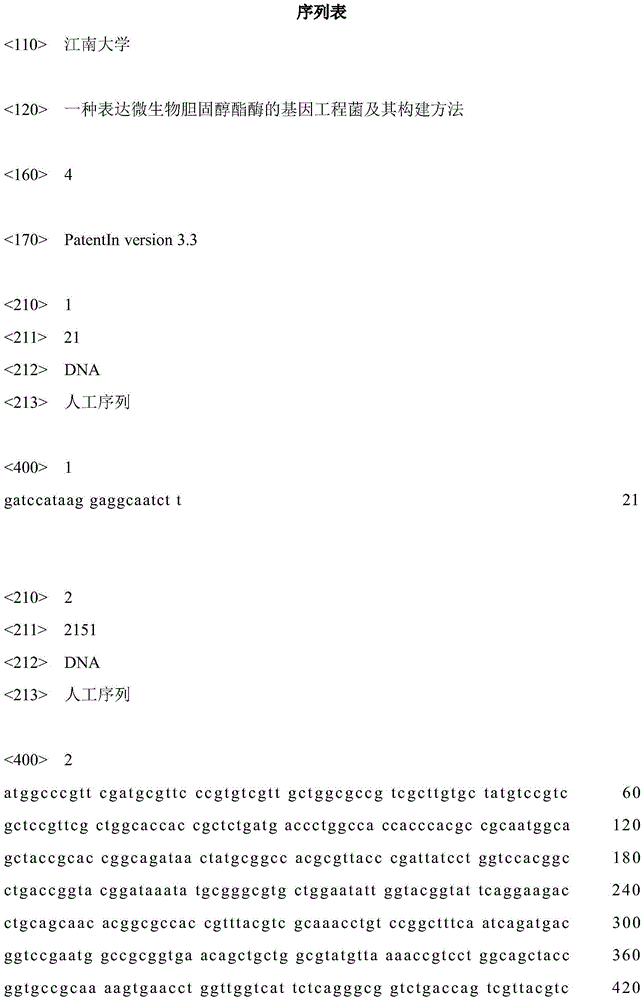Genetically engineered bacterium expressing microorganism cholesterol esterase and construction method thereof
A technology of cholesterol esterase and microorganisms, applied in the field of enzyme engineering, can solve the problem that compatible carriers are not easy to obtain, and achieve high-efficiency expression
- Summary
- Abstract
- Description
- Claims
- Application Information
AI Technical Summary
Problems solved by technology
Method used
Image
Examples
Embodiment 1
[0023] Embodiment 1: the construction of recombinant vector and genetically engineered bacteria
[0024] (1) Cholesterol esterase cheS gene fragment, whose sequence is GenBank accession number AB175022.1 (cholesterol esterase from Burkholderiacepacia.). The nucleotide sequence of the SD gene fragment is: gatccataaggaggcaatctt. Cholesterol esterase molecular chaperone limS gene fragment, the sequence of which is GenBank accession number is AB175022.1 (cholesterol esterase molecular chaperone from Burkholderiacepacia.).
[0025] (2) chemically synthesize the cal gene fragment of the sequence shown in SEQ ID NO.2, or optimize the cheS gene and limS gene in the previous step, and connect them with SD to obtain the fragment of the sequence shown in SEQ ID NO.2.
[0026] (3) Perform PCR with the fragment of the sequence shown in SEQIDNO.2 as a template, and sequences such as SEQIDNO.3 and SEQIDNO.4 as upstream and downstream primers respectively, digest the PCR product with quickcu...
Embodiment 2
[0028] Embodiment 2: Enzyme production by genetic engineering bacteria fermentation
[0029] Preparation of crude enzyme solution
[0030] The culture conditions of the seed liquid: use 250mL shake flask culture, the filling liquid is 20% LB medium, and add filter-sterilized 100mg·mL in the medium -1 Take 50 μL of kanamycin sulfate, take a single colony into the culture medium, and culture overnight at 37°C and 180rpm.
[0031] Fermentation broth culture conditions: use 500mL shake flask culture, the liquid is 20% fermentation medium, the MgSO 4 ·7H 2 O, glucose, and glycerin were made into mother liquors, sterilized separately, and the corresponding amount was added when used, and 100 mg·mL was added for filter sterilization -1 100 μL of kanamycin sulfate was added to 5% seed solution, 37°C, 200rpm, cultured for 8h, added 20% lactose induction solution, 28°C, 200rpm, induced for 20h.
[0032] Collection of bacteria and acquisition of crude enzyme solution: centrifuge the ...
Embodiment 3
[0036] Example 3: Purification of CAL
[0037] Affinity purification was performed using agarose as matrix, 2-hydroxy-1,3-propanediamine linking arm, and 8-chloroalloxazine as ligand synthesis medium.
[0038] 1. Sample preparation: adjust the conductivity of the loaded crude enzyme solution to be consistent with the conductivity of 0.11M potassium phosphate buffer solution (pH7.0).
[0039] 2. Column packing: 15mL plastic small column is fixed vertically, the tube at the lower end of the column is opened, and 3mL of medium is loaded, and allowed to settle, so that the ethanol in the column flows out to about a little higher than the medium interface.
[0040] 3. Equilibration: Equilibrate 10 column volumes with 0.11 M potassium phosphate buffer (pH 7.0).
[0041] 4. Sample loading: Take 20mL of crude enzyme solution and add it to the well-balanced affinity medium.
[0042] 5. Washing: Wash 10 column volumes with 0.11M potassium phosphate buffer (pH7.0) to remove unbound pro...
PUM
 Login to View More
Login to View More Abstract
Description
Claims
Application Information
 Login to View More
Login to View More - R&D Engineer
- R&D Manager
- IP Professional
- Industry Leading Data Capabilities
- Powerful AI technology
- Patent DNA Extraction
Browse by: Latest US Patents, China's latest patents, Technical Efficacy Thesaurus, Application Domain, Technology Topic, Popular Technical Reports.
© 2024 PatSnap. All rights reserved.Legal|Privacy policy|Modern Slavery Act Transparency Statement|Sitemap|About US| Contact US: help@patsnap.com










